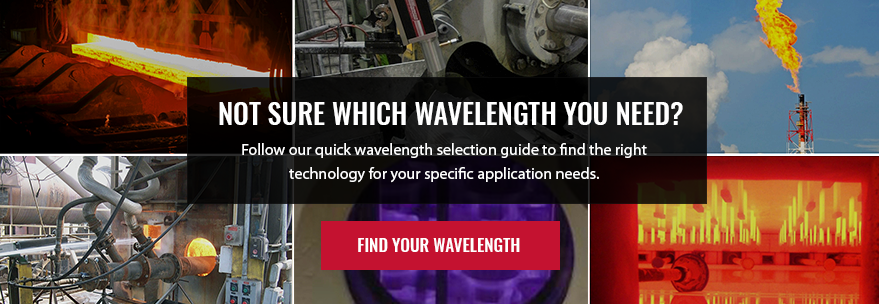
Infrared pyrometers are excellent devices to use when a direct contact measurement may not be possible. Often times the things we are trying to measure are simply too hot for contact devices like thermocouples or resistance thermometers. In addition, the things we are trying to measure could be located in hazardous or extremely hard to reach areas like a steel furnace or rotary kiln, or it can be a non-stationary object like steel moving along a continuous annealing line. Pyrometers offer a clear safety advantage because of the non-contact method of measurement.
Infrared pyrometers like Williamson’s provide extremely accurate non-contact temperature measurements. This is achieved by measuring the thermal radiation in terms of infrared energy being emitted by the source. Since all objects emit electromagnetic radiation this gives pyrometers an advantage where other temperature measuring devices may be insufficient.
A sufficiently heated object will usually emit a visible light or glow. Just because an objects heat may not be visible does not mean it’s not emitting energy. Every object emits an amount of infrared energy directly proportional to its temperature. Theoretical blackbodies are what allow pyrometers to be so successful. A blackbody such as the sun is an object which absorb 100% of the radiation that hits it, therefore it reflects no radiation. At any given temperature a black body emits the maximum amount of energy possible for that temperature and this correlates directly to a temperature span. This correlation allows pyrometers to make an “educated reading” when making a measurement because they are constructed on this principle.
What should I consider about my application when selecting an infrared pyrometer?
The critical considerations for any infrared pyrometer include:
- Field of view (target size and distance),
- Type of surface being measured (emissivity considerations)
- Spectral response (for atmospheric effects or transmission through surfaces)
- Temperature range.
Other considerations include: mounting (handheld portable or fixed mount), response time, environmental ratings, viewing port or window applications, and desired signal processing. Download our free wavelength selection guide below to figure out which wavelength you need for your process.

